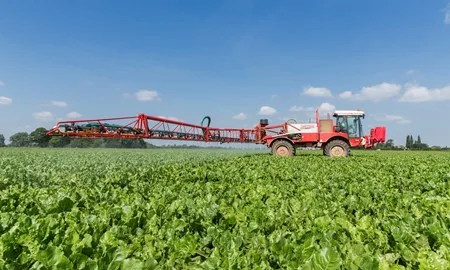
How to protect root crops from disease threats and get new crops established in tricky circumstances, CTM James Wilkins takes a look.
Author
James Wilkins | 31st July 2020East: Look after established and new crops this August in these 4 key areas
Crop Progress
Harvest is well under way in the east at time of writing, but most growers will just want to be shutting the gate on this season and forgetting about it. If the problems with cereals and oilseed rape weren’t enough, there are huge amounts of virus yellows appearing in sugar beet crops now – hardly a field doesn’t have some in, although there’s not much that can be done now.
James’ agronomy tips for August
1. Protect remaining sugar beet yield with fungicides
Beet rust is starting to come into crops, along with some reports of powdery mildew off the back of a warm and dry May. That means first fungicides in sugar beet are being applied at the time of writing at the onset of disease, and the need for follow ups should be monitored for and planned for no more than four weeks after the first one.
The long-term average in trials from fungicides is around 10t/ha over the untreated from two applications, with the breakeven point being a lift of 3.6t/ha. With virus taking some yield potential from crops, it will be important to protect healthy plants as much as possible.
2. Focus on tuber blight control
As blight programmes continue in potatoes, attention starts to switch to tuber blight control, as well as maintaining foliar blight control. With the aggressive strains 36_A2 and 37_A2 becoming more common, employing different modes of action are important for resistance management.
From now on Infinito (fluopicolide + propamocarb) becomes an even more important part of the programme, as it will control those aggressive strains and have activity against tuber blight. Pay attention to spray intervals, accounting for the risk in fields, and keep them to around seven days. You have a maximum of four sprays of Infinito during the season, and no more than two in a row.
3. Moisture is a key requirement to give the best chance of success with oilseed rape
Oilseed rape has probably gone from a love or hate it crop, to a hate it in the eyes of most growers. It has become extremely challenging to establish it in the east, mostly because of cabbage stem flea beetle attack, but also with lack of moisture in some seasons.
There are some tips you can do to give yourself a greater chance of success, although nothing is a silver bullet. These include maintaining a suitable rotation, keeping the soil in good condition, and ensuring moisture at establishment.
While you can’t control the weather after you’ve planted it, you can control whether there is moisture when you drill, and what you do to retain it.
Investing in good genetics is also important – there’s increasing evidence that hybrids are coping better than conventionals with the challenges – and looking for varieties that have a good speed of development in both autumn and spring are important factors to consider.
If you do choose a hybrid look out for establishment schemes that can help mitigate risk. The Dekalb scheme is for three hybrids – DK Exstar, DK Extremus and DK Excited, which all offer good early development speed. DK Extremus is the quickest, while DK Exstar has a good all round agronomic package. DK Excited offers turnip yellows virus resistance, so all three offer something slightly different depending on your needs.
4. Make best use of stubble management
Stubble management is a key part of grassweed control, giving the best opportunity to control them all-season. Research has shown that two sprays of Roundup (glyphosate) are optimum with the first targeting grassweeds when they have reached the 2-3 leaf stage in sufficient populations.
Pay attention to application technique – using the right nozzles and spray quality to hit the target, not going too quickly – 12km/hr is fast enough, as well as the right product and dose.
There’s going to be a temptation to drill wheat earlier this autumn, but while that’s understandable, consider the impact on grassweed control. Around 80-90% of black-grass emerges from August through October, so the later you can delay drilling and spray those emerged plants off, the better the chances of keeping on top of grassweeds, as well as having benefits against barley yellow dwarf virus and lowering disease pressure.